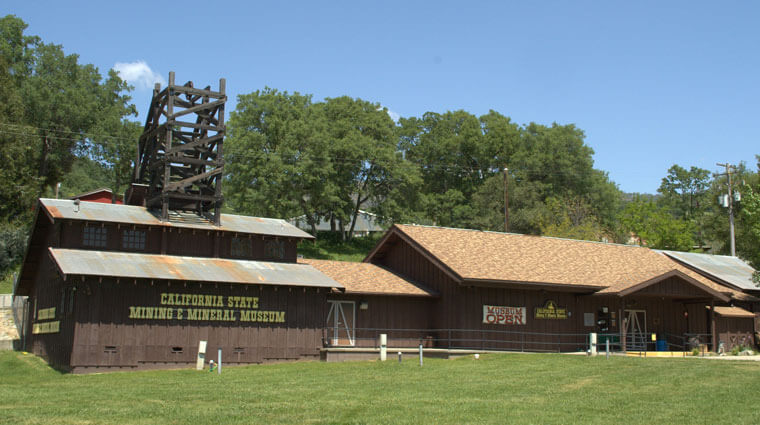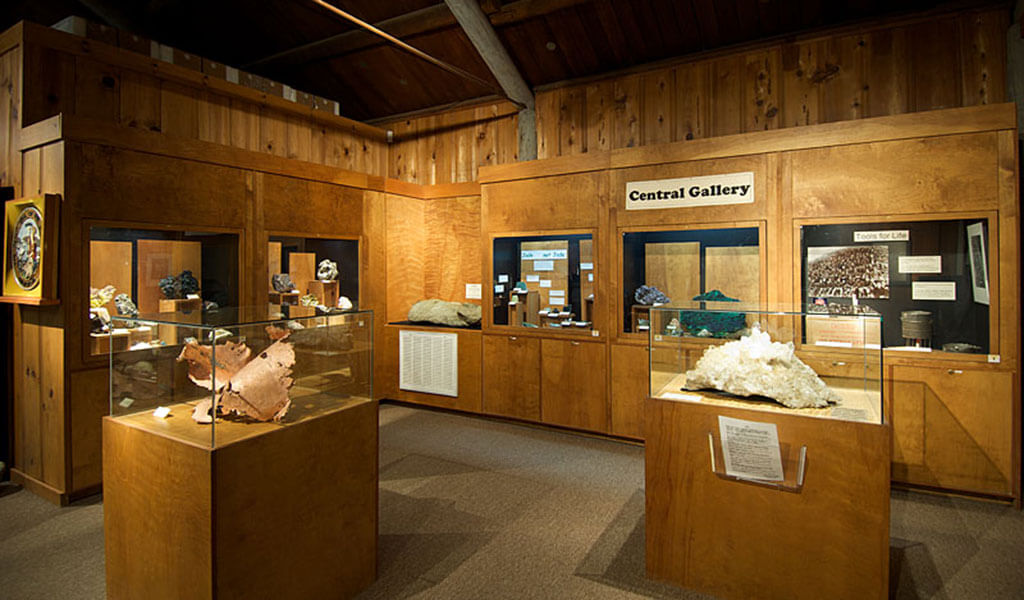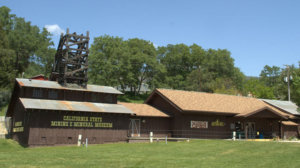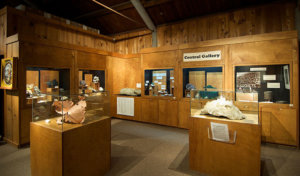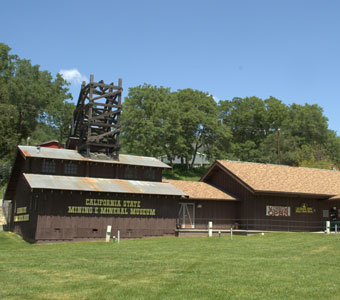
California State Mining & Mineral Museum
California State Mining & Mineral Museum
Central Mariposa County
Mariposa Fairgrounds, Mariposa, CA, United States
(209) 742-7625
Visit Website
Overview
Get a fascinating glimpse of California’s mineral wealth, colorful mining history, and geologic diversity, at the California State Mining & Mineral Museum. This museum represents California’s official collection, containing over 13,000 gems, mineral crystals, and mining artifacts, including the “Fricot Nugget,” a rare and beautiful 13.8-pound piece of crystalline gold found in the American River in 1864.
The museum is dedicated to helping families and students learn about the importance of mining and minerals to our history, our environment, and our future. The museum offers free activities for children and youth groups, including the Junior Ranger Program. They also provide school tours relating to geology, rocks and minerals, the gold rush, and mining history to hundreds of students each year.
Learn more about the California State Mining and Mineral Museum with the video below.
Learn About Rocks in Yosemite National Park and California
Not far from the museum, you will have a chance to see spectacular displays of some of incredible rocks in Yosemite. The world-famous destination of Yosemite National Park was millions of years in the making, a geological process that left behind spectacular cliffs and waterfalls like Half Dome and Yosemite Falls.
Famous Yosemite Rock Formations
Yosemite Valley holds most of the well-known Yosemite rock formations.
- Bridalveil Fall at the western end of Yosemite is one of the first iconic landmarks you see as you enter the valley from the west, flanked on the right by Leaning Tower.
- Next, you pass between the massive buttresses of El Capitan on the north and cathedral rocks on the south.
- Sentinel Rock stands guard next, with a disarmingly beautiful ephemeral waterfall, Sentinel Falls, cascading down to the right of it in the early spring.
- Then on the north side of the valley, Yosemite Falls dominates the central part of Yosemite Valley in the spring months and dries to a mere trickle by autumn.
- Finally, at the eastern end of the valley, Half Dome sits at the head of Yosemite Valley opposite Glacier Point, with the thin ridge of Cloud’s Rest behind.
What is The Famous Rock in Yosemite?
It’s hard to choose just one famous rock from the myriad well-known cliffs in Yosemite National Park. Certainly, the distinctive and descriptively-named Half Dome is a candidate, but others might choose the massive El Capitan or the proud Sentinel Rock that stands at the western end of Yosemite Valley.
Yosemite Geology
Nowhere is California’s geological history more on display than in Yosemite. The Yosemite geology story starts with granite that was formed when molten rock pushed its way into overlying rocks and cooled into massive granite domes. As the overlying rock eroded away, the granitic rock was exposed, but wasn’t nearly as dramatic as today. About 25 million years ago the block of the Earth’s crust beneath Yosemite was uplifted and tilted westward creating the Sierra Nevada mountain range. Because of the tilt, rivers carved deep canyons into the granite landscape. When those river canyons were then filled with glacial ice that carved out the u-shaped valleys we see today.
What Type Of Rocks Are Found In Yosemite?
When you look around Yosemite, mostly what you see are plutonic igneous rocks composed of minerals such as quartz, potassium feldspar, plagioclase feldspar, biotite, and hornblende. Although most people simplify and call all the granitic rocks in Yosemite “granite”, there is actually many forms of plutonic rocks in the park, including granite, granodiorite, tonalite, quartz monzonite, and quartz monzodiorite.
However, that’s not the only kind of rock that you’ll find in Yosemite. Metamorphic rocks start out as either sedimentary or volcanic and are then changed “metamorphosed” due to pressure, temperature, and other stress from being buried in the Earth’s crust. While most metamorphic rocks are found outside the park to the east or west, if you keep your eyes open on the trail to May Lake you might see some greyish to rusty brown metamorphic xenoliths as well as lavender and green metamorphic rocks on the trail past May Lake to Mt Hoffmann that geologists believe may have originated near the Mojave Desert, 250 miles away.
(Second photo courtesy of California State Parks)
Amenities
- Historic Interest
